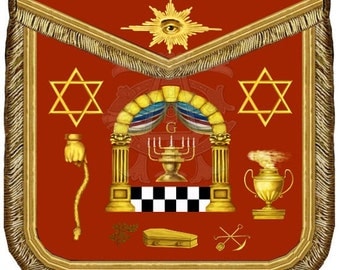by Midnight Freemason Contributor
Bro. Aaron Gardner
 I have mentioned on Celestial Brotherhood, and various other articles across the Freemason community, a revolution is on the verge of breaking out in our Craft. Please remember, this is not a revolution that involves guns and bloodshed. Instead, the revolution is and will be a peaceful one, which is quite necessary for the Fraternity to successfully advance. We are not here to fight the old way of doing things, instead we are trying to improve things. There will always be undertakings that have worked in the past and are still relevant today. Some Grand Lodges are helping to quickly facilitate the changes, while others appear to be more apt to stifle rather than support these coming changes.
I have mentioned on Celestial Brotherhood, and various other articles across the Freemason community, a revolution is on the verge of breaking out in our Craft. Please remember, this is not a revolution that involves guns and bloodshed. Instead, the revolution is and will be a peaceful one, which is quite necessary for the Fraternity to successfully advance. We are not here to fight the old way of doing things, instead we are trying to improve things. There will always be undertakings that have worked in the past and are still relevant today. Some Grand Lodges are helping to quickly facilitate the changes, while others appear to be more apt to stifle rather than support these coming changes.As Aristotle said, “The secret of change is to focus all of your energy not on fighting the old, but building the new.” If we want this change, we will have to work for it. The sooner we realize this, the easier the change will come and the brick wall of change will crumble. Everyone involved needs to be willing to compromise. It is important to impress upon those hesitant to support the coming changes that we do not seek to fight or eliminate the established traditions, but to improve upon them. There will always be work that has been successful in the past and continues to be so today. We are all responsible for the wall that is prohibiting us from moving forward into the Twenty-first Century.
The brick wall preventing us from progressing has been laid for years. We are constantly applying more mortar and laying more bricks with each passing year. It is not solely put up by the stereotypical grumpy Past Masters or other members who oppose any changes; it is collectively built by all of us. Even those who appear to be progressive.
In order to take down that wall— make the change that is needed— we need to stop fighting and forcing our thoughts down everyone’s throats. Instead, be subtle about the change. Baby steps work better than giant leaps. Rather than eliminate and change, alter what exists to improve upon it. So, your lodge really enjoys having the pancake breakfast, but it is not as productive as you would like to see. Make a suggestion to the brethren of your lodge to make the pancake breakfast the main event, but have other ways of fundraising within the breakfast. For example, a raffle drawing is a great way to get people interested in donating more to a cause. Why not have your pancake breakfast and pass around the raffle tickets while at the breakfast?
Another great idea was presented at the 16th District of Ohio’s rollout plan. This district has proven just how far our Fraternity is coming along. It is a very progressive district and is looking to find more efficient and effective ways to engage in fundraising while making it’s presence known in the community, something about which will be further detailed in coming articles.
The idea that was brought forward at the district meeting was to make booths to sit at in the local fairs. Not cheap cardboard booths, but something that would last. They pulled the funds together to afford the wood, and used the labor from the lodge to build these booths. Because it is a booth that will last, they will have the booths readily available at anytime and can be used for more than just the local community fairs. It puts them outside in the community and allows the people to see them. It takes work, it takes dedication and most of all it takes time. Some times that’s more than what we are willing to give to the Craft. It is understandable that busy schedules can keep one from working inside Freemasonry, but consider the lesson of the 24-inch gauge and work accordingly.
When the Fraternity finally get past all the hiccups of dedicating time, money, and work, the only thing left in it’s way will be members calling for change, but being unwilling to provide the change. For effective change to happen, one needs to stop telling his lodge that they want change, and, instead, needs to begin providing it. Each Brother can, individually, take a brick out of this wall— collectively tearing it down together with old and new ways of work.
~AG
Bro. Aaron Gardner , an American Soldier who just recently transitioned into the Reserves after 8 years serving the Active Duty Army. He dedicates the majority of his free time to Freemasonry with his constant studies, writing and traveling from lodge to lodge to learn as much as he can regarding Freemasonry. He likes to relate his everyday life to the Craft and anything he finds he wants to spread to the world. It is his passion to study people, religion, history and Freemasonry. When he isn't working as a Soldier he is dedicating his time to the amazing and supportive Emily, writing about Freemasonry and writing his very own novel. His blog page is Celestial Brotherhood.




